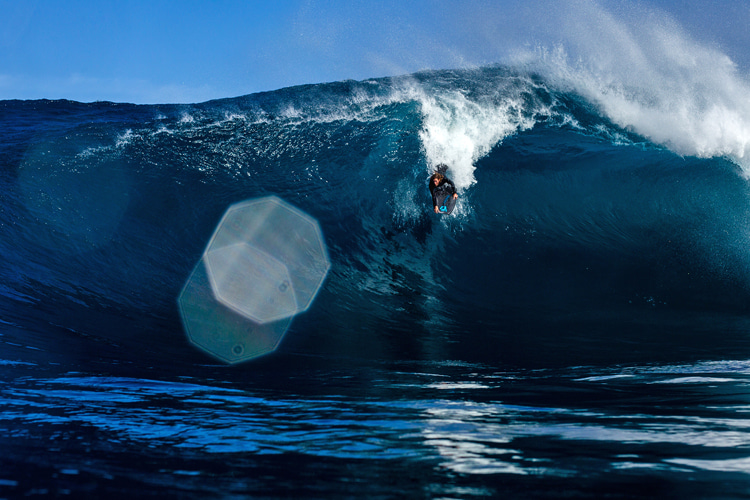Joshua Ellard Garner is a visual artist, musician, and entrepreneur. He is the heart and soul behind "One Vast Ocean," a bodyboarding movie that sets a new standard.
Garner was born on January 20, 1989, in Perth, Western Australia.
He is not the stereotypical wave rider, and his shooting angles reveal connotative angles of life and the relationship between humans and Nature.
Joshua wants the viewer to go behind the literal and objective side of wave riding and bodyboarding in particular.
He wants us to reflect on what's in front of us rather than passively pressing play and sitting on the couch watching his movies.
"One Vast Ocean" is a timeless piece of bodyboarding culture that keeps the sport connected to its essence and spirit.
SurferToday sat down with Joshua Garner to discuss and dissect his 2021 masterpiece.
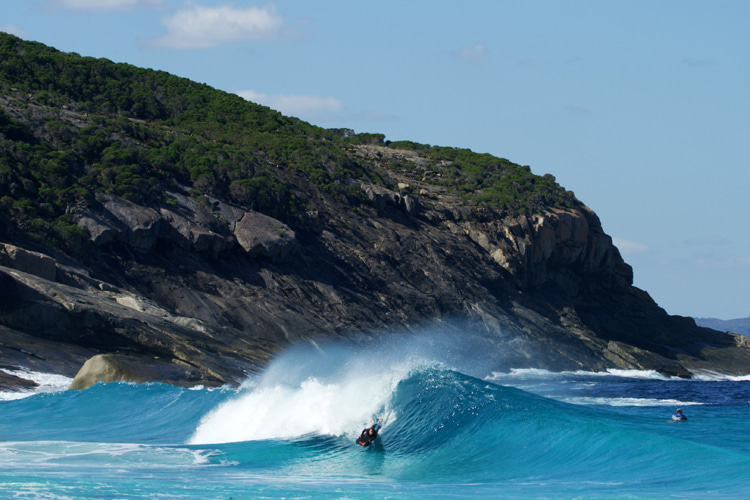
What is the leitmotif behind "One Vast Ocean," and where was it shot?
Part one of "One Vast Ocean" features the Southern and Indian oceans off Western Australia as we explored the coastline from Perth to Albany.
My friend Rex Nink-Mowday and I have been filming for this feature for around two years.
The waves were mostly featured in chronological order.
By juxtaposing clips, I could bring some subtle meaning into it and create an abstract flow - like a mystery mosaic unfolding before your eyes.
I wanted the viewer to feel relaxed and present for 48 minutes.
The soundtrack evolves in a harmonious manner, following major and minor shifts between the key signatures of each song.
There is one particular track I used twice, which became a sort of theme song for the film. Although every track is unique, this one seemed to have settled in as the soundtrack.
I have created a lot of music over the years, so I tried my best to be discerning with the selection.
My plan is to continue this project with the recurring theme of fun, soulful connection, and collective unity.
Why are you interested in shooting bodyboarding?
All the riding featured in "One Vast Ocean" is of me and mostly filmed by Rex. We both enjoy a good strike mission.
The adventures are great for fun and connecting with Nature. Most of the waves we score are rare gems in WA. They only light up a few times a year.
Riding a bodyboard gives you great access to many different waves without the aid of a jet ski. So whether you're riding or shooting, experiencing the ocean on a bodyboard is wonderful.
The film concept has also begun to expand into all ocean sports, and I'm happy this is in motion.
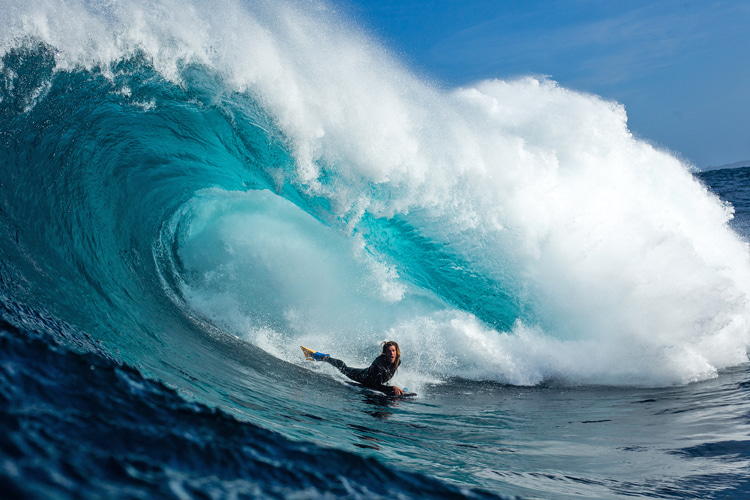
Why have you blended several different shooting and post-editing techniques in your film? Have you studied or have a degree in arts or multimedia?
When it comes to filmmaking and editing, I am mostly self-taught.
But I also have formally studied classical music, fine arts, multimedia, and graphic design at various levels.
By blending several different shooting and post-editing techniques, I create a layering effect that allows the depths of dimension and points of perspective to be revealed.
I like to keep the audience entertained on the surface level of the waves but also to evoke a deeper layer or level of experience happening under the waves, which is actually where all the action is really is.
What has been the reaction from the bodyboarding world?
I released the film with no expectations. I was very surprised by the positive feedback.
Some even awarded it the "Bodyboarding Film of the Year."
But that's probably because there haven't been many bodyboarding films released in the past year.
Not to undermine my work, I just have huge respect for the wave riding industry and the filmmakers amongst it. This is just my flavor to add to the barrel.
Do you plan to follow a career in surf photography/videography?
Yes, I would love that. I'm not bodyboarding as much these days, but I still want to be involved in the industry.
I find creating these films is a natural progression for my love and connection with the ocean.
It also brings a new platform of communication for my music and art.
I feel I can offer a lot to the world of surfing and bodyboarding, given the right opportunities.
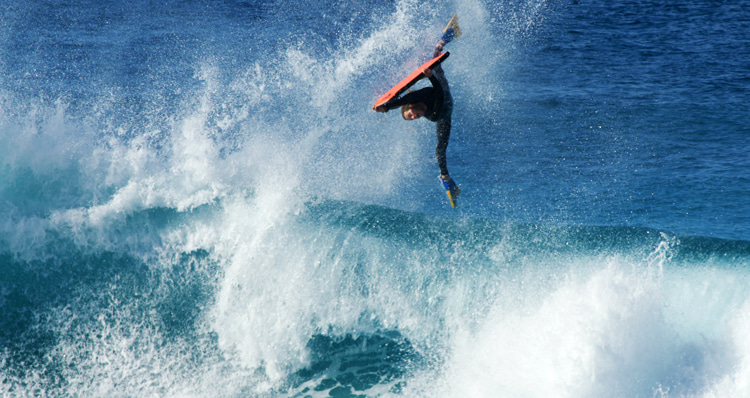
What are your favorite surf breaks? Have you got any criteria for picking the shots you included in the flick?
Part one is exclusively Western Australia, and the waves featured are all at my favorite surf breaks.
They represent the "One Vast Ocean" theme very well and capture the beauty of these locations.
When I started the editing process with all of my wave-riding footage, it would have been a four-hour film. So, I focus on the longer meditative episodes.
Part two moves to Indonesia. Part three of "One Vast Ocean" is still a mystery. But I have a feeling it'll explore Tasmania.
The motivation behind the whole film is the connection we all share with the ocean.
As the divide between land and culture becomes more evident, I find solace, hope, and inspiration in this project.
I like to think the ocean is a clear reflection of our collective consciousness. The ocean is also a great place to take away our stress, so it's important we keep that connection balanced.
When we give a good wave, we get a good wave.
Could you describe the tools, equipment, and process of creating these types of films?
Rex films with a RED camera, and I film the lifestyles with a Canon EOS 7D and a Super 8.
Rex captures the action, and I put it in place, add my music, and share it.
We both have a well-trained awareness when it comes to shooting and riding heavier waves. That creates clarity and safety during some pretty gnarly moments.
Presence is very important during this process as everything happens very fast, so feeling confident in the team is important.
Sometimes, we time it perfectly, and it feels effortless, and other times, it's a nauseating and turbulent road to nowhere.
Nonetheless, every time we set off on an adventure, we score some great shots.
I use Adobe Premiere Pro for the editing process and Logic Pro and Pro Tools for the music. There's also some post-production with Adobe After Effects and Adobe Illustrator.
The most important part of the process is being on the ball when the waves start rolling in.
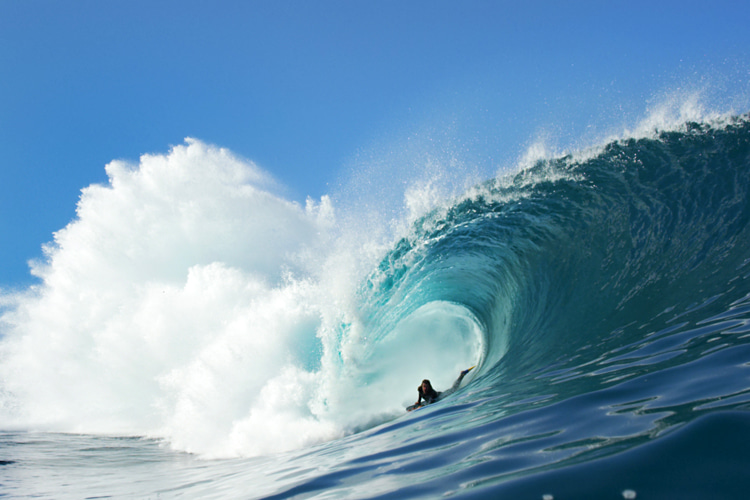
Do you try to learn more about the people and places where you shoot?
Yes, there's always something new to learn about the locations shot in this film - especially the waves.
Some are very fickle, so we are always learning on the road.
The people who chase these waves are a diverse bunch - all with their own career paths on the side and some lucky enough to make a living just from surfing.
So there's always a fresh gathering of people when these waves turn on. We all have a common goal to get out there and amongst it and bond through that.
How do you identify and pick the rides and waves that made the final edit?
I had a lot of footage to get through. The first cut was three hours long.
So I trimmed the fat and decided part one would focus on the footage gathered in Western Australia.
Choosing the clips that held a level of presence and coherence with one another was my goal.
Some clips were layered to create a juxtaposed feeling, open for interpretation from the viewer, somewhat ambiguous.
I chose images that did not suggest any hidden agenda. I just wanted my bodyboarding and music to do the talking.
There's a lot of trial and error involved in predicting Nature, so I chose images that would open that communication up and reveal the vulnerability that is sometimes felt in these moments.
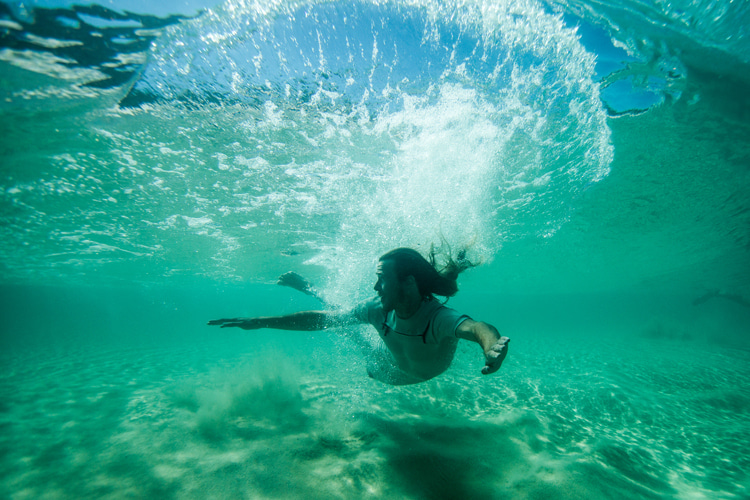
What were the most challenging conditions you've faced while filming?
That's always a part of it - sometimes the stakes are high, and conditions can change rapidly. Everyone's safety is always very important.
During a session at The Right, there was a near-drowning incident.
Luckily, some well-trained mates were there with skis and a sled and knew CPR and the whole protocol, which possibly was the reason he survived.
It was scary to witness, but we all did our part, and he was alright. These are the challenges that you must be ready for.
It was right at the end of the session when the wind had swung and the ocean turned hairy; it was a good lesson for us, knowing when enough is enough.
I enjoy paddling whilst at the right, and it's challenging to position myself in the right spot amongst so much water movement.
There's a moment of standstill - when the rolling swell meets with the draining reef, and you are right in between those converging energies.
Paddling into waves like this is an awesome challenge, and I'm in love with this aspect of bodyboarding.
There's a lot of power and potential felt in those moments.
Have you ever been contacted by any surf company to shoot promotional clips?
Yes, I've done other promotional clips for surf companies in the past. Rex also films a lot for other surf projects.
My label - The Axiom - is bringing in new work for all of us, and we also have We Are The Axiom, which is a collective of artists, musicians, content creators, athletes, and event organizers.
We are all very interested in working with bigger surf companies and have a lot of unique talents and skill sets to achieve great things for our clients.
What is your connection to bodyboarding and the waves we see in "One Vast Ocean"?
I have a strong connection with bodyboarding, and I have been doing it professionally for many years.
All the wave riding you see in "One Vast Ocean" is of me.
Editing your own footage is interesting. You know what you like and don't like, but you are your own worst critic.
Either way, the whole process helped me learn and develop a better understanding of my wave riding style, and I noticed my riding improves from this.
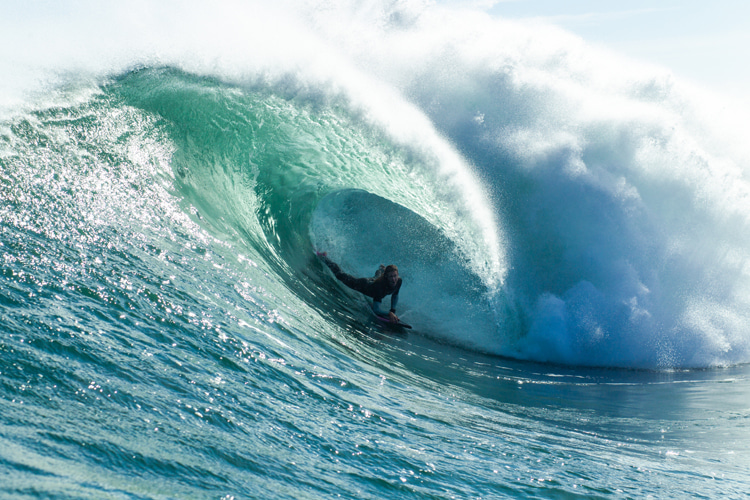
Is there any wave or ride in the film that has been kept secret from the average wave rider?
Yes, I didn't share a lot of footage that would reveal exactly where based on the secrecy of some locations.
Western Australia has a huge coastline, so there's still some very unmarked territory that Google Maps can't even help you out with.
So it's important we keep a few gems in our pocket.
What was the most surprising surf-related moment you've witnessed while shooting "One Vast Ocean"?
The natural wildlife is always surprising me. Sharing waves at the right with dolphins was one highlight.
Also, the whales and the albatross appearing on their pathways navigating back from Antarctica created some pretty dramatic awe-inspiring moments.
But it seems every time we travel to these locations, so many things change, and there's always something new to notice.
To be honest, all the footage we gathered is a surprise, as we scored so many amazing sessions.
How would you describe the bodyboarders' relation with the ocean and waves in particular?
Bodyboarding has a balanced relationship with the wave. There is no regular or goofy. It's the same both ways.
We are riding on a small piece of foam with special swimfins, so it's a pretty quirky, versatile sport.
It's also very functional and adaptable for getting amongst any conditions.
I've noticed a lot of filmmakers and photographers in the surf industry were mainly bodyboarders before that profession began.
Bodyboarding gets you up close and personal with the ocean, and your body literally bends and flows with the contours to become one with the wave.
It's only 50 years old, so the sport is relatively new.
There's still a lot to learn and possibly lots more innovation up the track, although it's a very simple sport.
Ideally, we can create totally sustainable products and become one of the first sports to be completely ocean-friendly.
Our impact is small, but it still all adds up.
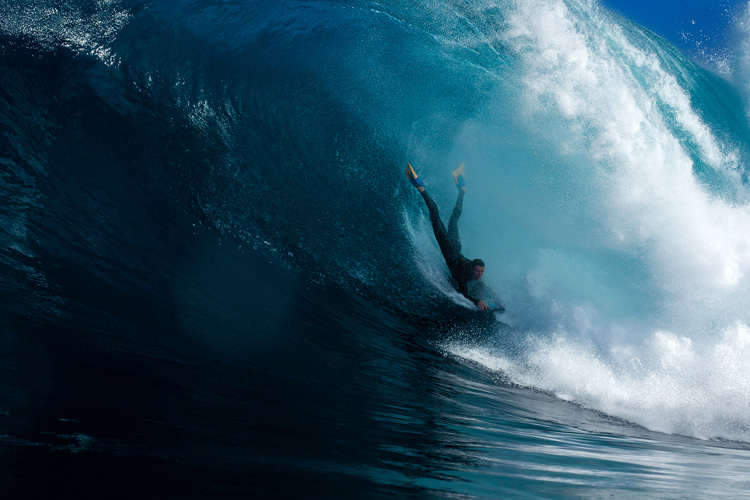
What are your future plans for getting bodyboarding movies into the mainstream?
I haven't really thought much about that, even though I do have a very clear vision in my mind.
They play out like a film you would easily see in the mainstream.
I write them down as scripts and wait for the waves to turn on, so I have a premeditated approach to capturing those fleeting moments.
They aren't so much focused on all about the bodyboarding or the athlete; they are more about the ocean and the experience as a metaphor for life.
And that is something I feel becomes more relatable to anyone watching, not just wave riders, but for all of society.
Tell us more about yourself and your hobbies.
I love making music, gardening, and planting native trees - longboarding, too.
Painting is probably my ultimate love. I've been doing that since a child and haven't stopped.
I also like organizing events because I love to see people getting together, connecting, and having fun.
I love to meditate and peacefully contemplate.
I also enjoy exploring the known and unknown elements of life. I love the journey and the destination.
I'm driven to achieve something wonderful with my life and, at the same time, very satisfied with taking small steps and enjoying each moment as it unfolds.
